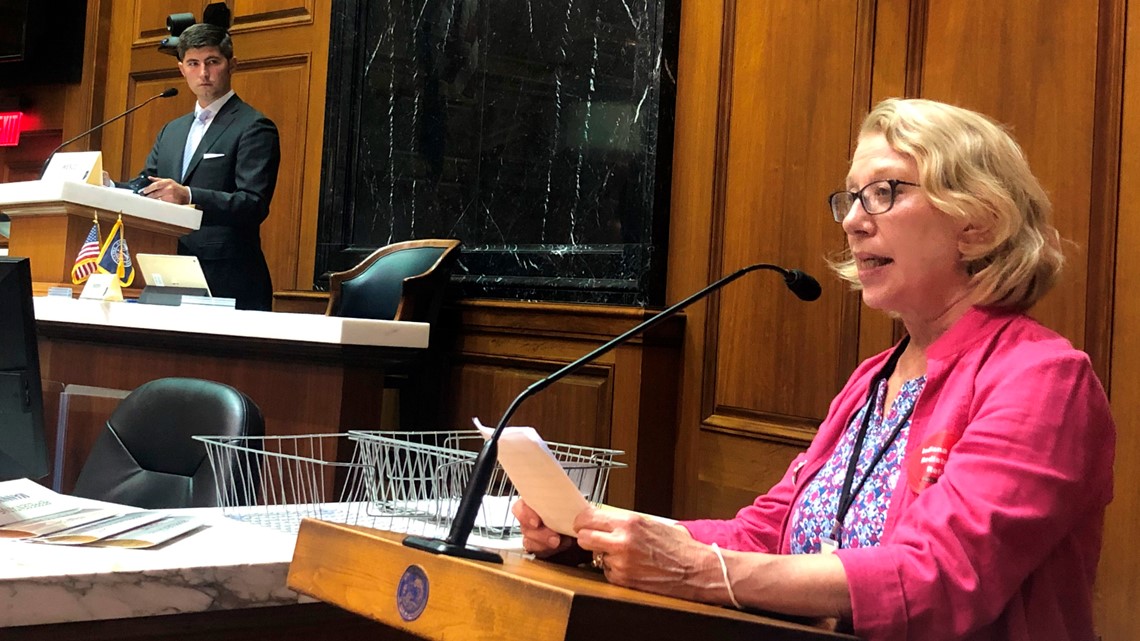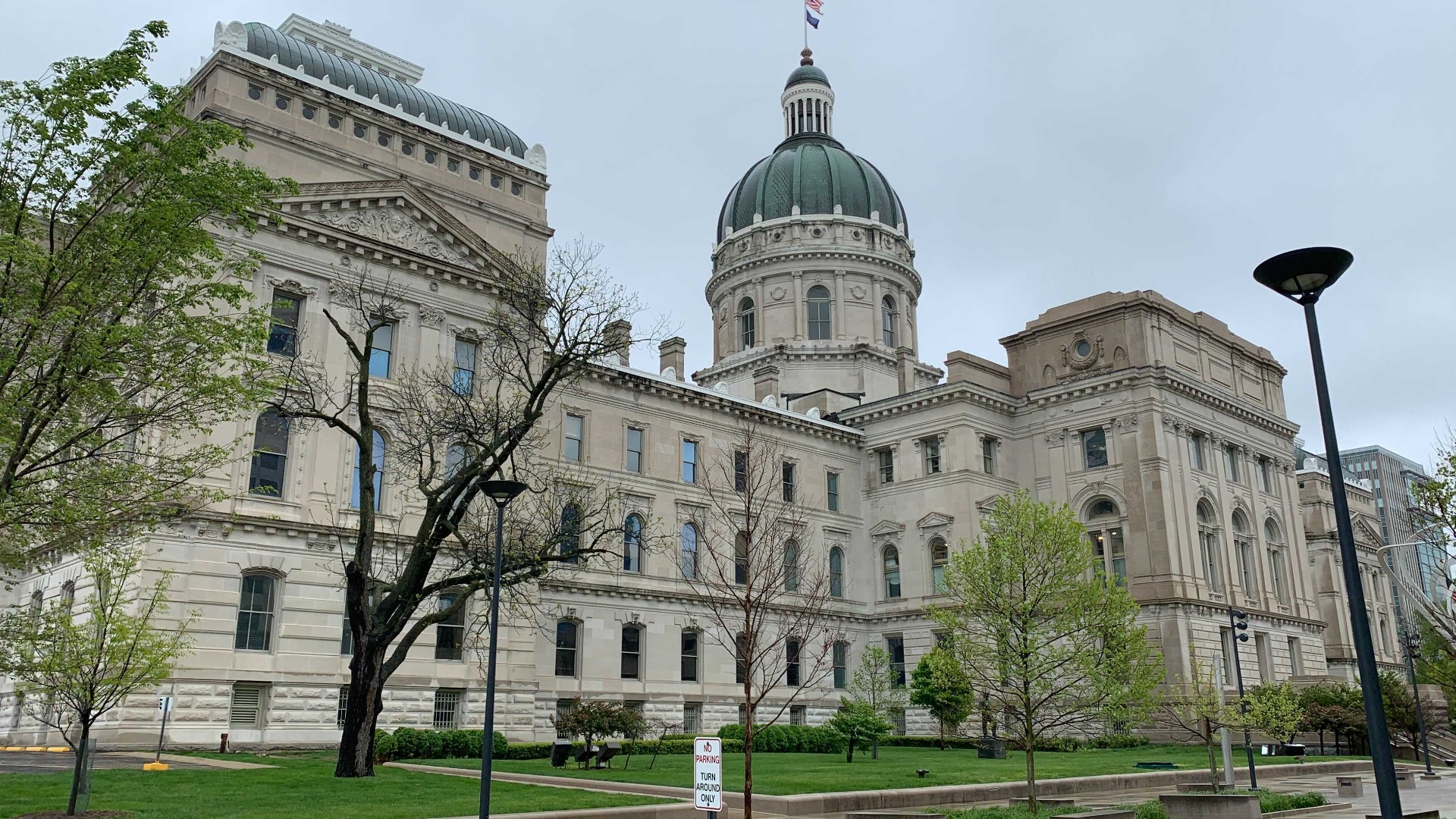INDIANAPOLIS — On Tuesday, Hoosiers got their first look at an initial draft for the U.S. House of Representatives and Indiana House of Representatives district maps.
It's a once in ten years redraw that will set the tone for Hoosier policy and politics in the statehouse for another decade.
Tuesday's release shows how the state's congressional districts will be redrawn and Indiana House districts. The Indiana Senate districts will be released later.
Amid a coronavirus pandemic that stalled the U.S. census, voter's rights advocates had the chance to mobilize citizens in one of the most gerrymandered states in America. In recent months, redistricting reform leaders worked to mobilize voters, and push lawmakers to create maps that are truly representative of Indiana's changing demographics.
Julia Vaughn is the executive director of Common Cause. This congressional redraw is her third, and she's never seen the public this engaged.
"That tells me a couple of things - it tells me that we've done a good job getting out and educating people and organizing them. But, it also tells me that these districts that were drawn 10 years ago were really extreme. They've had a full impact on voters. They're disappointed in the jobs that their members of Congress and the state legislature are doing. They're concerned about the extreme tone that is being taken by so many in politics at the national and state level. And they understand now how that is facilitated by gerrymandering," Vaughn said.


This week, two of just three hearings will be held in which citizens can voice input on the maps before they become official.
Here are some terms and dates to know before those public hearings:
What is redistricting?
Redistricting is the once in a decade process of redrawing legislative districts after the U.S. Census comes out.
In Indiana, the state legislature is tasked with redrawing those legislative district.
Indiana was apportioned into 9 districts following the 2010 redistricting.
What is gerrymandering?
It’s a decades old practice used by legislators across the political spectrum to gain an edge over the opposing party come Election Day.
Gerrymandering is the act of manipulating congressional or legislative district maps in a way that gives that mapmaker’s party disproportionate power as a result.
What does the census have to do with redistricting?
Lawmakers use the data from the census in order to redraw legislative districts, which is why they are redrawn every ten years.
The Indiana General Assembly initially planned to address redistricting in March or April of 2021. Due to delays at the U.S. Census Bureau due to the pandemic, the necessary data wasn't available.
The U.S. Census Bureau delivered the census data needed for states to complete the redistricting process Aug. 12.
What data from this year's census could affect the new district maps?
There are some key takeaways from the census data.
- Indiana is more diverse now than in the 2010 Census.
- In general, rural counties lost population.
- More urban counties gained population, especially in the Indianapolis metro area.
All of these changes should, if the maps are drawn fairly, have an impact on the new legislative districts.
Is gerrymandering a problem in Indiana?
A report commissioned by Women 4 Change in June said Indiana General Assembly and legislative maps are now more biased towards one party than 95% of maps enacted in other states across America.
Dr. Chris Warshaw is an Associate Professor of Political Science at George Washington University, and conducted the study on commission from Women 4 Change.
His work focuses on partisan gerrymandering, and he has analyzed data from nearly all 50 states for his research.
He found Indiana to be an extreme outlier.
Given the supermajority within the Statehouse, voter rights organizations in Indiana said they are concerned lawmakers will not have incentive to draw the maps in a way that is truly representative of Indiana.
The way the Republican-led legislature has gone about the redistricting process has drawn criticism from bipartisan redistricting reform advocates, Democrats, and independent commissions.
"[The process] is being rushed through the public given being given very little time to analyze, to study the maps before they're being asked to give public testimony. There are no plans for additional hearings around the state. So if you want to have a say in redistricting, you're going to have to come down to the state house. And for most people, they'd have to take the day off work because these hearings, again, are at 1 o'clock and 10 during normal business hours for most of us. So, unfortunately, the transparency and open process that the public is asked for is not what the General Assembly is getting prepared to give us," Vaughn said.
What can I do to advocate for fair maps in Indiana?
While lawmakers technically have until November 15 to make the maps official, Republican lawmakers have made it clear they want to fast-track that process.
There are currently two hearings scheduled regarding the maps.
One will be on September 15 at 1 p.m. The other will be held on September 16 at 10 a.m.
Senate map hearings will be held on September 27 at the state house.
Written testimony can be shared by emailing State Sen. Jon Ford (R-Terre Haute), chair of the Senate Committee on Elections, at s38@iga.in.gov or State Rep. Tim Wesco (R-Osceola), chair of the House Committee on Elections and Apportionment, at h21@iga.in.gov.
You can also contact your legislator anytime to share your comments. Click here to find your state senator or state representative.
The Indiana General Assembly is also providing an online map-drawing portal for Hoosiers to draw and submit their proposed new district boundaries for the U.S. House of Representatives, the Indiana House of Representatives and the Indiana Senate.
The web portal contains all the same census and election data lawmakers will have access to as they draw the new Statehouse and congressional district maps.
The link to the portal may be found here: https://indistricting.iga.in.gov/

